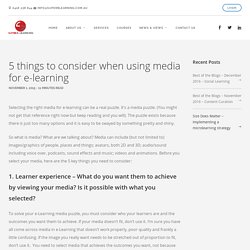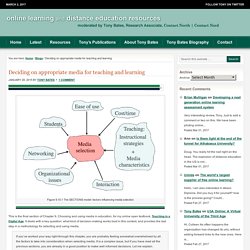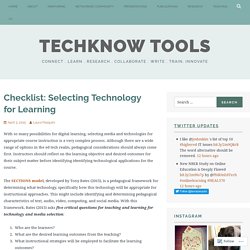

An Error Occurred Setting Your User Cookie. 5 things to consider when using media for e-learning - Superb Learning. Selecting the right media for e-learning can be a real puzzle.

It’s a media puzzle. (You might not get that reference right now but keep reading and you will). The puzzle exists because there is just too many options and it is easy to be swayed by something pretty and shiny. So what is media? What are we talking about? 1. To solve your e-Learning media puzzle, you must consider who your learners are and the outcomes you want them to achieve. “If the picture you really want needs to be stretched out of proportion to fit, don’t use it.”
If you stretch images in your e-Learning courses, your learners will notice. Do you choose an Image or video for your e-Learning? 2. When searching for media to incorporate into your e-Learning make sure your selection is relevant to your learners. If I hadn’t pointed out the connection between the media puzzle and horse racing, would you have understood the relevance?
3. 4. Not everyone is keeping up with the latest trends in technology. 5. Deciding on appropriate media for teaching and learning. This is the final section of Chapter 9, Choosing and using media in education, for my online open textbook, Teaching in a Digital Age.

It deals with a key question: what kind of decision-making works best in this context, and provides the last step in a methodology for selecting and using media. If you’ve worked your way right through this chapter, you are probably feeling somewhat overwhelmed by all the factors to take into consideration when selecting media. It is a complex issue, but if you have read all the previous sections, you are already in a good position to make well informed decisions.
Let me explain.Deductive versus inductive decision-makingMany years ago, when I first developed the ACTIONS model, I was approached by a representative of a large international computer company who offered to automate the ACTIONS model. We sat down over a cup of coffee, and he outlined his plan. How to use multimedia in eLearning: 6 factors to consider. Multimedia makes eLearning interactive, entertaining, and easily digestible.

But only if you know when, how, and why to use these elements in your eLearning course design. In this article, we’ll highlight 6 factors you should consider when integrating multimedia in eLearning. From animations and infographics to interactive presentations, there are a broad range of multimedia options to choose from. However, it’s important to remember that all of these tools serve one key purpose: supporting the subject matter. They should never overshadow the core ideas and concepts, or distract online learners from the learning objectives. So, how do you add multimedia to your eLearning design without creating chaos and confusion? 1. We’ve all had the misfortune of participating in cluttered eLearning courses. This is all supported by scientific fact: our minds are incapable of multitasking. 2. Many learning theories support the benefits of repetition. 3. 4.
It’s true. Checklist: Selecting Technology for Learning. With so many possibilities for digital learning, selecting media and technologies for appropriate course instruction is a very complex process.

Although there are a wide range of options in the ed tech realm, pedagogical considerations should always come first. Instructors should reflect on the learning objective and desired outcomes for their subject matter before identifying identifying technological applications for the course. The SECTIONS model, developed by Tony Bates (2015), is a pedagogical framework for determining what technology, specifically how this technology will be appropriate for instructional approaches. This might include identifying and determining pedagogical characteristics of text, audio, video, computing, and social media.
With this framework, Bates (2015) asks five critical questions for teaching and learning for technology and media selection: Who are the learners? Checklist: Selecting Technology for Learning ____Textbook, readings, or other online text materials;